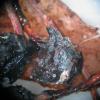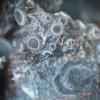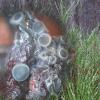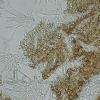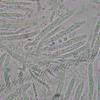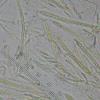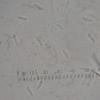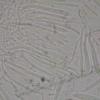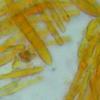
11-01-2026 20:35
Hello.A very tiny pyrenomycete sprouting sparsely

09-01-2026 17:41
Arnold BüschlenHallo, F. dilatata wird von vielen Bryoparasiten

10-01-2026 20:00
Tom SchrierHi all,We found picnidia on Protoparmeliopsis mur

07-01-2026 22:22
 Danny Newman
Danny Newman
Tatraea sp. on indet. hardwood The Swag, Great Sm

10-01-2026 01:18
 Danny Newman
Danny Newman
cf. Neovaginatispora fuckelii on indet. shrub Pre

07-01-2026 10:24
 Danny Newman
Danny Newman
Pezicula sp. on indet. hardwood Appalachian Highl

09-01-2026 10:08
 Blasco Rafael
Blasco Rafael
Hola, en el mismo habitat que la anteriorRetamaDia

08-01-2026 21:22
 Blasco Rafael
Blasco Rafael
Hola, He recogido esta muestra de Orbilia sobre Re

07-01-2026 17:29
 Marc Detollenaere
Marc Detollenaere
Dear Forum,On a barkless Populus I found some smal

10-11-2021 17:33
 Riet van Oosten
Riet van Oosten
Add-on topic http://www.ascofrance.com/forum/7059
 Hi everybody,
Hi everybody,Found mid-winter ( 25/1/2014) on berries (still at the bush) of Vaccinium myrtillus.
Ascomata: 0,45 – 0,55 mm. Ø
Asci: 35 – 50 x 4 - 5 µm. J+
Spores: 8 - 10 x 1,5 – 2 µm., 8-spored
I think of a Mollisia but I know nothing of this genus. I wonder if it's possible to identify the species with this information
Regards,
Piet
Clearly a Mollisia.
If you wanna try a Mollisia, you have to check the color of the paraphyses in KOH 5%, if it becomes yellow or not, and how much, and during how much time.
Then, take Andreas Gminder's key: http://www.mollisia.de/Word_Dokumente/key.doc
By the way, IKI on asci, you said J+: is it blue or dull red? It's not very clear from the photo.
Cheers - LUC.

Many species are not host-specific, and many are very difficult to distinguish.
Zotto
I'd tentatively suggest that this could be what passes as Mollisia revincta (or Pyrenopeziza revincta, although this is a true Mollisia) in most molecular studies. At least, I think it resembles this species based on short ascus length, ascospores often with one end slightly pointed and the other more rounded (but this is not always the case in this species), and small apothecium size when fairly mature.
My DNA-sequenced collections of this species were KOH-, and so I'm not convinced this is a good test to differentiate Mollisia revincta and M. cinerea... It is also not a host specific species. If it is the species I'm thinking of it should also have several very minute oil droplets in the ascospores either at the poles or scattered throughout the ascospores, although these are often difficult to visualise.
Of course, as Zotto says, it is very difficult to differentiate most of these species at present if there are no very distinctive features, especially when the original species concepts are relatively vague (e.g. Mollisia cinerea) and so little is known about the relationship of DNA-based species concepts and morphology in Mollisia.
So... I would consider Mollisia revincta as a possibility, but definitely not a certainty!
Cheers,
Brian

I am pleased to read your contribution. What was the substrate of your sequenced M. revincta? Did it genetically fall to M. revincta in GenBank (AJ430224)? For that record no substrate is given, but the study was on burnt and metal-polluted areas.
I did not study M. revincta too often but would be surprised if the not very strongly yellow KOH-rection would be absent sometimes. Actually, I saw it only on herbaceous stems and would not have considered this species here, though i admit the microscopy is quite similar.
When testing a BLAST with AJ430224, I get M. cinerea and M. fusca with (98-)99% similarity. Not sure what this says, but maybe this sequence was M. cinerea rather than M. revincta? Perhaps Anreas Gimder can answer this question based on his unpublished sequences.
Andreas distinguishes in his key between M. revincta which is KOH+ and M. ?revincta being KOH-. Both are on herbaceous stems.
Zotto
Yes, both my sequenced collections fell in with this clade, although they were very slightly different to each other - it is possible that this clade is a species complex of very closely related but morphologically similar species, or that there is a degree of natural intraspecific ITS sequence variation.
My collections were from the base of a decaying Epilobium stalk, and from an unidentified decorticated woody herbaceous stem - both from Swansea, Wales, UK.
AJ430224 Pyrenopeziza revincta ARON3150.P was also collected from a decaying stalk of Epilobium augustifolium.
With regards to the other near-identical sequences under different names: since there are no morphological records of any of these collections, and the ITS sequences are all essentially identical, I think it is sensible to treat these identities as dubious for now. I didn't even trust the Pyrenopeziza revincta ID until I collected it myself.
There are a number of Mollisia cinerea sequences in GenBank, all in different clades, but without morphological evidence there is no way of telling which could be correct. Hopefully Andreas will be able to sort this out by producing a reliable epitype this year. My own view is that what most people think of as Mollisia cinerea could be a cluster of tree-endophytic species associated with Phialocephala dimorphospora - these are very common in the UK.
The occurrence of Piet's collection on Vaccinium berries is a little surprising though! There are a number of other Mollisia-affiliated species with unknown apothecial morphology (Phialocephala fortini s.l., P. glacialis and others) associated with Vaccinium roots and leaves, but I'm not aware M. revincta is one of them, although it does associate with Calluna vulgaris in some habitats. There is a DNA sequence of M. revincta from a Viscum (mistletoe) berry, but I think this is more a result of association with pine needles and the host tree rather than a specific berry preference. Like most Mollisia spp, it's an ecologically complex and confusing fungus!
Cheers,
Brian

This is a problem in GenBank as a whole that you have fine sequences but cannot control anything. And when you ask people you often do not get clearer.
Today I had a case with Arthrobotrys superba, a UK record deposited by Duddington in CBS 109.52 as A. conoides. The same strain was sequenced for SSU by one working group and for ITS by another. Later Gregor Hagedorn sequenced the strain again, and included SSU, ITS and LSU. Now the SSU shows a distance of 2% between the two overlaping sequences, while the ITS matches perfectly. I assume there happened a confusion, but which of the two identities is the correct one? Depending on this, the strain is either A. oligospora or A. superba.
In addition, Duddington did not give his collection number when he published his A. conoides, so there is a nice drawing but you can only speculate that the strain belongs to the drawing.
Zotto
But - according to GenBank, JF514855 Mollisia cinerea was a collection of apothecia from Rubus, collected in Foret Hermitain Melle in France. Judging from the DMW strain code, it was from Walker's private collection, and so probably fairly recent. But without morphological details it's a bit useless as an ID - there's not even a guarantee it was examined microscopically.
Brian

Zotto
